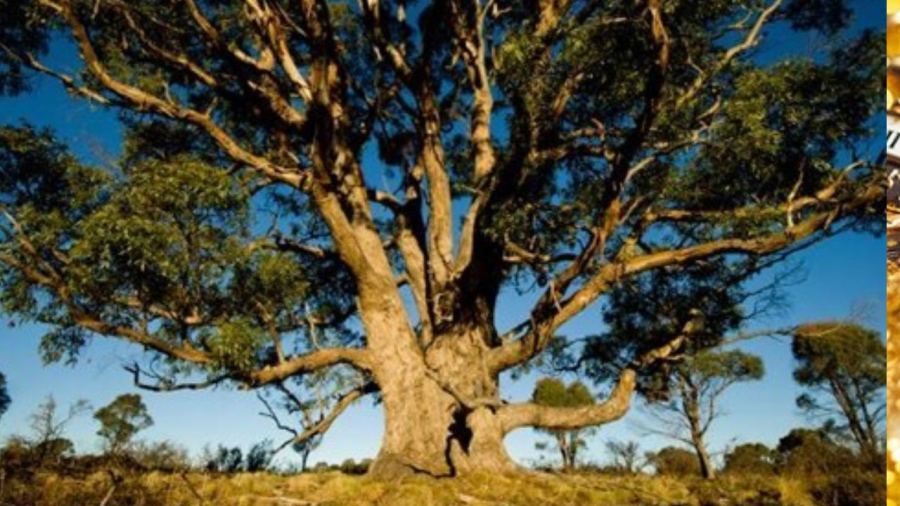Eucalyptus marginata, or more commonly known as jarrah, is an intriguing tree species native to Western Australia. Scientists have made a fascinating discovery about jarrah trees: they often grow in areas with gold deposits, and their roots have an uncanny ability to absorb gold particles from the soil.
The extensive root system of the jarrah tree can reach depths of up to 40 meters, enabling it to access groundwater and, surprisingly, gold minerals. This led researchers to explore a unique approach to mineral exploration—analyzing plant samples for the presence of gold. They found that the leaves of jarrah trees indeed contained gold particles.

Jarrah Tree with Deep Roots Capable of Absorbing Gold Crystals
In 2013, a study published in Nature Communications by the Commonwealth Scientific and Industrial Research Organisation (CSIRO) in Australia shed light on this phenomenon. The researchers visited Freddo Gold Prospect in northern Kalgoorlie, Western Australia, to test their hypothesis. They discovered that the gold in the leaves was not due to environmental pollution but was indeed absorbed from the soil. Larger jarrah trees were found above deep gold deposits, and their leaves, branches, and bark contained significantly higher gold concentrations.
To further validate their findings, scientists conducted a controlled experiment by growing jarrah seedlings in pots filled with sand and gold. Remarkably, the leaves of these seedlings also contained gold particles.

Gold Particles Found in the Leaves of Jarrah Trees
How Much Gold Can Be Found in a Single Jarrah Leaf?
While jarrah trees can absorb gold into their leaves, the amount of gold present is minuscule. It is important to note that the gold content in the leaves is not in the form of large nuggets but rather trace amounts.
The gold concentration in the leaves is approximately 46 parts per billion, which equates to 0.000005% by weight. This means that it would take the leaves of 500 jarrah trees to produce enough gold for a small ring. Nonetheless, this discovery has led to the development of a more environmentally friendly approach to gold exploration.
In 2019, Marmota, a mining company, successfully located gold in South Australia using this plant-based mineral detection method. They discovered a 6-meter-wide gold vein containing 3.4 grams of gold per ton at a depth of approximately 44 meters.
Jarrah trees are tall, timber-producing trees with various practical applications. They are cultivated for paper production and essential oil extraction, which has medicinal properties, including pain relief, stress reduction, anti-inflammatory effects, and overall health benefits.






























